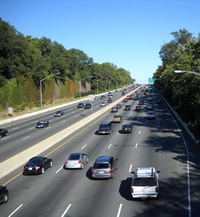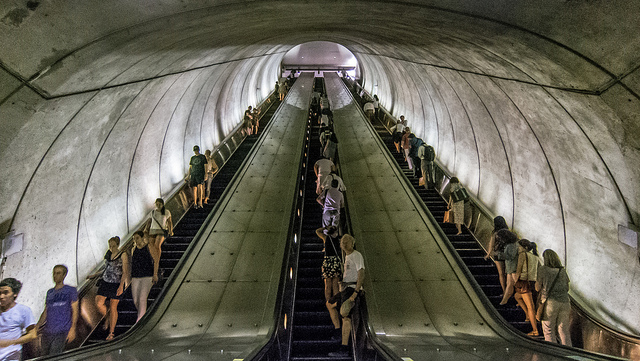Driving down in Md. and across nation; group asks for more transit spending
Marylanders drove their vehicles 4% fewer miles from 2005 to 2011, mirroring a general driving decline across the country, according to a report released Thursday by the Maryland PIRG Foundation.
Some of the reduced driving may have been due to the recession. But the state-by-state analysis based on federal figures found driving declined as much or more in states experiencing lower unemployment rates. There was also a more pronounced decline in driving among Millenials, people age 16 to 34, and a smaller percentage of 19 year-olds holding driver’s licenses than 30 years ago.
The report also found that increased telecommuting did not reduce the total number of miles driven.
From the data, PIRG (formerly Public Interest Research Group) drew the conclusion that less money should be spent on roads and more on mass transit.
“It’s time for policy makers to wake up and realize the driving boom is over,” said Joanna Guy of PIRG. “We need to reconsider expensive highway expansions and focus on alternatives such as public transit and biking.”
The Maryland General Assembly this year increased the state gasoline tax to help replenish a depleted Transportation Trust Fund. Gov. Martin O’Malley and other state officials have been going around the state announcing new transportation projects, both roads and transit.
The PIRG report simply looks at reduced driving per person and tries to correlate the data with other factors, such as unemployment, labor force participation, economic conditions and telecommuting.
Congestion not part of study
Other studies have found the Baltimore and Washington metropolitan areas are among the most congested in the country. The PIRG study makes no attempt to look at road congestion or highway conditions as a factor in reduced driving.
The study also does not suggest how much money should be shifted to transit or where the money would come from.
O’Malley this month appointed 11 members to a Local and Regional Transportation Funding Task Force to “help determine the best ways to support regional and local transportation system needs,” he said. The task force was created as part of Transportation Infrastructure Investment Act that increases the gas tax over the next four years, raising transportation spending by $4.4 billion. Major projects envisioned include the Purple Line from Bethesda to New Carrollton, and the Red Line in Baltimore City.
–Len Lazarick
Len@MarylandReporter.com

MarylandReporter.com is a daily news website produced by journalists committed to making state government as open, transparent, accountable and responsive as possible – in deed, not just in promise. We believe the people who pay for this government are entitled to have their money spent in an efficient and effective way, and that they are entitled to keep as much of their hard-earned dollars as they possibly can.


